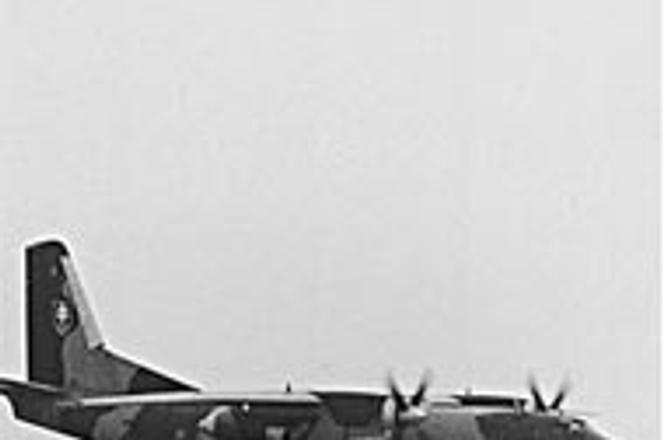"Bratislava wants passenger traffic. But Vienna won't budge. They'll give them pure cargo."
Robert Paterson, General Director of DHL
Under capacity. M.R. Štefaník airport accommodates only 20 percent of the 1.2 million passengers it can handle.Ján Lörincz
Cooperation between M.R. Štefaník Airport in Bratislava and Schwechat Airport in Vienna has taken a giant step forward with an agreement expected November 10 or 11. Following negotiations with a committee of the Slovak Ministry of Transportation, Communications, and Postal Services and officials from Schwechat, Bratislava Airport is about to be incorporated as a private shareholding company with 100 percent state ownership. Dula explained that the Slovak Ministry of Finance's approval was necessary.
There are several legal obstacles that need to be cleared involving civil aviation regulations but the deal is set to come into effect on January 1, 1997, according to Dula.
The agreement has been in the works for several years and is undergoing "due diligence" at Salomon Brothers Investments, according to the press director of the Schwechat Airport Authority Hans Mayer. Igor Dula, Director of the Slovak Airport Authority, was reluctant to discuss the amount of money involved but gave a general outline of what it will entail.
M.R. Štefaník Airport is vastly underutilized with a capacity of 1.8 million passengers but the actual usage is about 250,000.
With this gross underuse Bratislava wants more passengers to come through its airport and is looking for overflow from Vienna's busy hub. "Bratislava wants passenger traffic," said the general director of DHL, Robert Paterson. "But Vienna won't budge. They'll give them pure cargo," he said.
For Schwechat, adding two runways (bringing the combined total to four) has achieved a de facto expansion without having to undergo the exhaustive process. "The planning involved in adding runways can take about 50 years," said Dula.
Austrian and Slovak officials describe the new arrangement as an "airport system." For example, while the ultimate vision for cooperation between Bratislava and Vienna involves a rail link would also serve as a commuter rail, a bus link between the two must be addressed first.
Border stop-free
Plans are being finalized for a "green line" bus service, which will avoid customs stops at the border. These plans be subject to the Schengen agreement, which places a special border police regiment on those EU countries that have borders with non-EU members. However, Dula said that the European Union, through the PHARE program, has been fully apprised of what's in store.
The bus link will be a preceding step for rail linkage, which has received PHARE support and is subject of an international study. The data produced in this intermediary stage is expected to prove valuable in the planning process.
Ingrid Wolf, Austrian Airlines District Manager for Slovakia, was unaware that a deal had been reached but was excited about the prospects. "To have two capital cities so close together is quite unique in the world," she said. "The airport amalgamation presents great opportunities for both cities."


